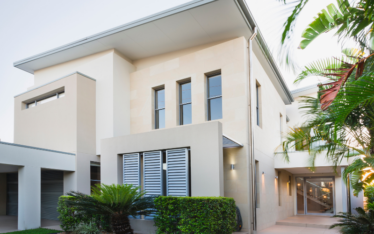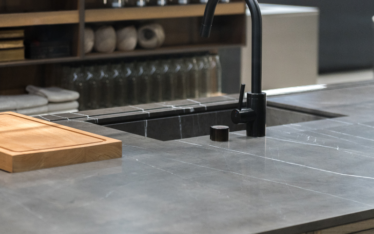Disclaimer – We at Evolve are manufacturers of premium interior products that are crafted using new-age building materials like liquid metal and decorative concrete. Please visit our products page to learn more about our offerings and services. We are also on the look out for channel partners to help increase our presence. Visit our partner page to learn more about partnership opportunities.
Bored of staring at the same old white walls or moving into a new home and wondering how to make it your own? Try wallcoverings! Wallcoverings may be a familiar concept in the design world, but what’s interesting is their ability to create drama and depth into interior spaces that never fails to impress. Why settle for regular white walls when you can craft alluring textures and finishes for your walls that tell your story? These wallcoverings come in different materials, textures, and colours, transforming your interiors into breathtaking spaces.
When it comes to choosing wallcovering materials, you may find yourself tossing between multiple options. Read on to be inspired by the different types of wallcoverings and make an informed decision for yourself.
Types of Wall Coverings:
1. Paint
If you’re looking for a flexible and easy makeover for your interiors, paint can be your go-to wallcovering material. From rich and dramatic textures to subtle and calm finishes, paint can drench your space with effortless elegance. Want a subtle and classic look? You have neutral shades. Want to go overboard with a bold vibe? Pick deep and bright colours. With its endless colours, textures, and finishes, you can materialise your customisable wallcovering ideas and add personality and a whole lot of character to your space. What’s more, you can choose paints with low VOCs(volatile organic compounds) to make a sustainable and eco-friendly choice. So, whether you want to paint a single wall or an entire house, consider choosing paint.
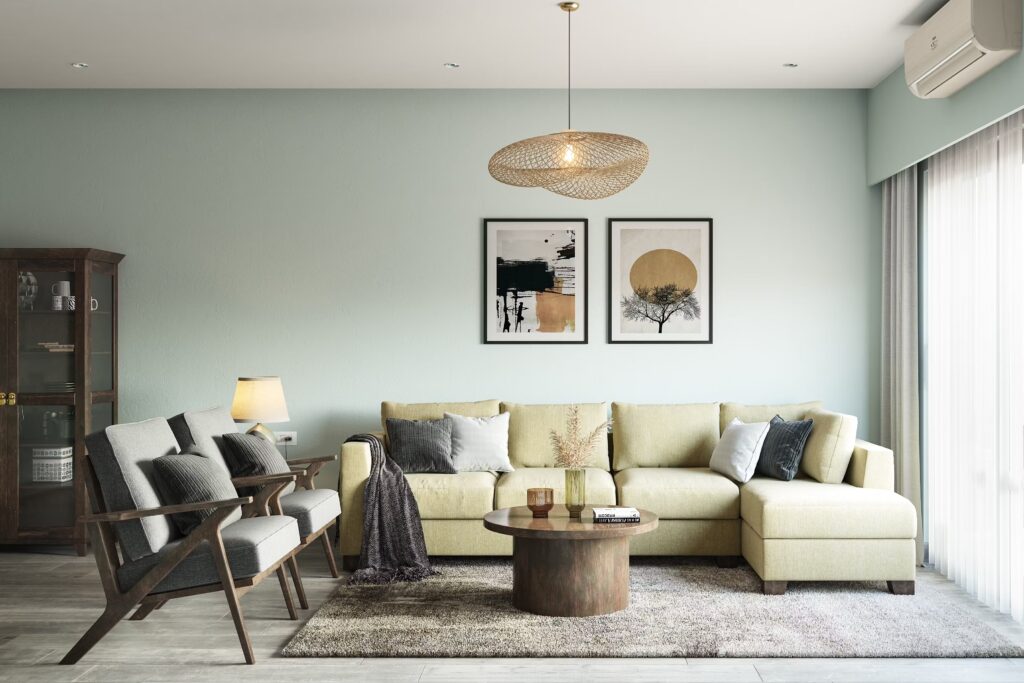
Pros:
- Selective paints can helps prevent moisture from penetrating and eventually damaging your internal walls.
- It helps in concealing dents, cracks, or minor blemishes and creates a smooth and fresh look for your imperfect walls.
- The process of painting is easy to accomplish compared to wallpapers or tiles.
- With paint, it is relatively easy to change the colour if you get bored with the original colour.
Limitations:
- Paint has great options for colours and finishes, but it has limited options when it comes to textures.
- It is prone to chipping, fading, and peeling over time, making it less durable than other materials, needing frequent touch-ups and reapplication.
- Paints tend to realise odour that lingers for days or weeks after application.
Price range:
You can purchase distemper paint – a classic choice for a price range between INR 10 to INR 25 per square foot and apply it directly on your cemented walls.
If you want to add a touch of elegance to your walls, you can go for emulsion paint. For a slightly higher price, starting from INR 20 and going up to INR 42 per square foot, you get a more durable and long-lasting finish. But remember, emulsion paint, unlike distemper, needs a primer coating before application.
You can also indulge in sheer luxury using texture paint. They come at a price range between INR 80 – INR 250 per square foot.
2. Wallpaper
If you’re looking for a more decorative and luxurious option, wallpaper is the way to go. With its endless array of patterns, colours, textures, and types of wall finishing, wallpaper can instantly transform any room into a work of art. From classic floral designs to bold geometric patterns, there’s something for every taste and style. Wallpaper is a great way to add personality and character to your space, whether you choose to cover an entire room or create an accent wall. It’s also a popular choice for adding depth and visual interest to small spaces – think powder rooms, mandir backdrops, work from home setups etc.
Wallpapers are even available in partner patterns and solid colours that allow your wall covering ideas to take a holistic and more customised look. With its durable and long-lasting options(10-15 years), you can make a one-time investment and redefine your space. Wallpapers also release VOC compounds, just like paints, so it’s best to invest in an eco-friendly wallpaper range. If you’re renting a home or often tend to change your mind about home decor, removable wallpaper might just be the right choice for you. However, it may not be the perfect pick for humid areas or walls with water leakage issues.
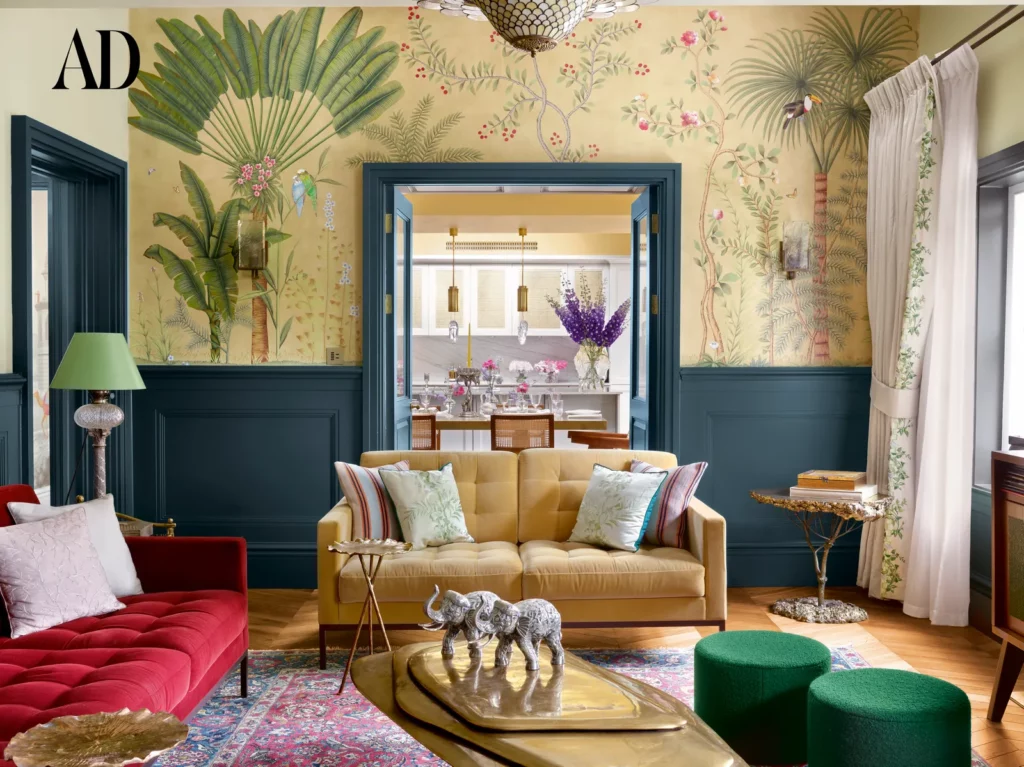
Pros:
- If your walls have defects or you have thin walls, a suitable thick wallpaper can hide all its imperfections. It can make poorly designed walls look spectacular.
- Wallpaper needs less drying time. The surfaces are dry upon application, so your functional areas are ready to use immediately. If you are short on time, go for wallpaper. It has a quicker turnaround time and is easier to install than paint.
- Wallpaper is more durable than paint and can withstand wear and tear.
- If you have children or pets at home, go for vinyl varieties of wallpaper that are easy to clean.
- With wallpapers, you can easily redecorate your walls. If applied correctly by an expert, you can easily replace it with minimum effort.
Limitations:
- If not chosen properly, wallpaper can elevate or ruin the look of your space. You need an expert or a professional to guide you before selecting the wallpaper that suits your functional and aesthetic needs.
- As wallpaper isn’t ideal for humid areas like kitchens and bathrooms, you can use it only in restricted areas.
- In case of any scraping on the wall, finding an exact match of the pattern or texture may be challenging.
Price range:
Wallpapers come in rolls of standard sizes, 57 square feet and 75 square feet. You can buy one roll for anywhere between INR 3000 to INR 10,000, depending upon the design, variety and quality you choose. The installation charge can vary between INR 200 to INR 500 per roll.
3. Tile
Tile wall coverings offer a classic and natural appearance that can add a style quotient to any space and take it a notch higher. From ceramic tiles to vitrified to mosaic to glass tiles, they come in different designs, shapes, and sizes, allowing you to create a customized design. Whether you want to use tiles on a feature wall, as a kitchen backsplash, or cover shower walls and vanity tops, there is a perfect match for every area. So if you’re looking for a timeless and sophisticated look, consider tile as a wall covering material for your home. You can also incorporate a flush access door within these panels and get seamless integration and convenient access to hidden utilities or storage spaces.
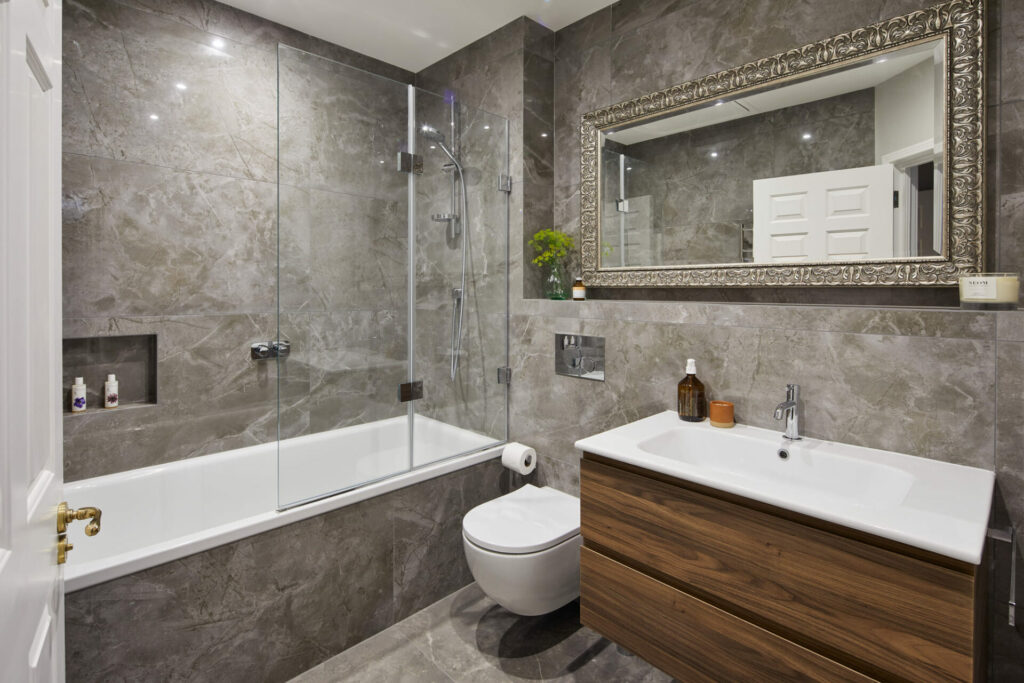
Pros:
- Tile wall coverings are durable and resistant to scratches, dents and fading. If you can clean them weekly, they can last long.
- If you’re looking for wall covering materials for areas highly exposed to water or steam, tile is your best option. It resists moisture and keeps the area nice and clean.
- It is easy to install, clean and maintain.
- Tile does not emit any toxins or VOCs, making it an eco-friendly option.
Limitations:
- Although tiles are durable, they are not resistant to wear and tear. In case of any damage, you may need to repair or replace them.
- Installing tiles can be time-consuming and requires an expert, especially for intricate patterns.
- Tiles are bad at retaining heat, making them unfit for cold climates.
- You may not want to use tiles for your bedrooms and living room walls as they tend to magnify sound. However, you can use them in small quantities.
- If a few wall tiles are damaged, you may find it hard to find an exact match and end up changing the entire wall covering.
Price range
If you’re looking to install tile wall coverings, it will cost you somewhere between INR 34 to INR 1000 per square foot, with additional installation charges. Luxury brands offer a lot of varieties both in terms of design and personalisation.
4. Stone
Stone wall coverings offer a natural and timeless look that can instantly elevate the elegance of any space. From marble to granite to limestone, there are a variety of stone options to choose from. Each type of stone has its own unique characteristics and variations, adding depth and texture to your walls. They are a popular choice for fireplaces, accent walls, and outdoor spaces. So, if you’re looking to bring the beauty of nature into your home, consider using stone as a wall covering.
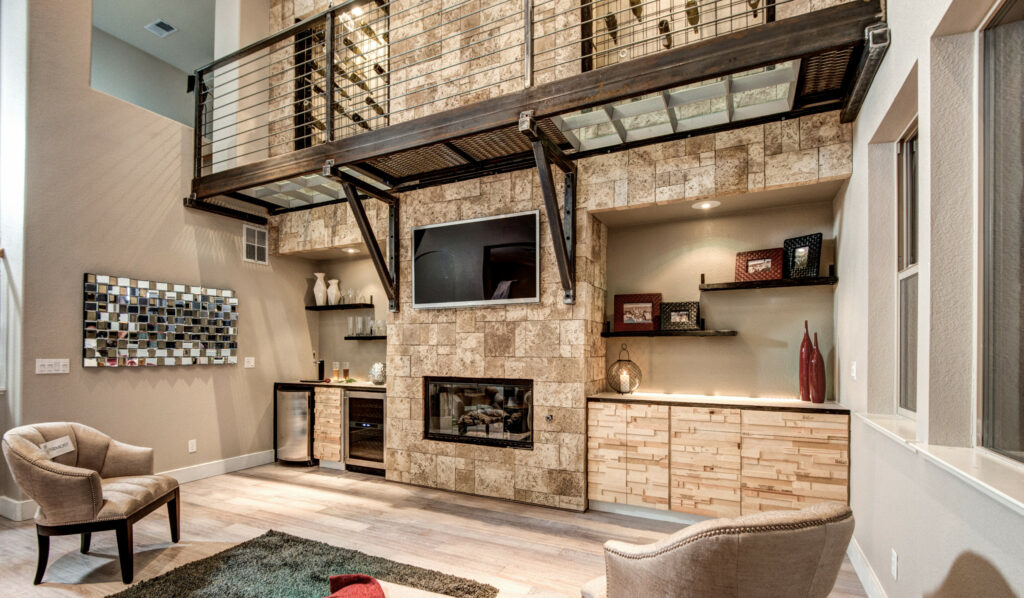
Pros:
- If you’re looking for a rustic and vernacular look thats long-lasting, stone wall coverings are a great option. They are highly durable and resistant to wear and tear.
- Stone gives a natural look, adding elegance, texture and a sense of luxury to interior spaces, making them more intimate and cosy.
- Just like tiles, they are relatively easy to clean and maintain.
- Stone has excellent thermal resistance, making it beneficial for colder climates.
- Its natural soundproofing quality makes it an excellent choice for private spaces.
- Stone is one of the most sustainable materials to work with.
Limitations:
- While installing stone as a wall covering material, you may need to determine if your building has sufficient structural support. The weight of stones can add pressure to your building and may not be suitable for some structures.
- You cannot install it without skilled labour and expertise. If not installed properly, it can lead to uneven walls, gaps and other serious issues.
- Stone is susceptible to stains, particularly from acidic substances and oils. Sealing stones can help resolve the issue but may require regular maintenance.
Price range:
If your wall covering ideas include stone, it will cost you between INR 50 – INR 700 per square foot.
5. Fabric
If you’re looking to add a touch of luxury and elegance to your space, fabric wall coverings are the perfect choice. From rich and textured textiles to intricate tapestries, fabric wall coverings can instantly elevate the look of any room. Whether you’re aiming for a cosy and intimate atmosphere or a regal and sophisticated feel, fabric wall coverings, offer endless possibilities.

Pros:
- If you’re looking for an option that’s attractive and durable at the same time, go for fabric wall coverings. They last longer compared to wallpapers and paint.
- Fabric is super easy to install and remove.
- Unlike usual hard wall surfaces, fabric wall coverings can add a delicate, cosy, and sophisticated feel to your space.
- If you’re looking to soundproof a room, fabric wall covering will do your job.
- It’s a breathable material and resistant to moulds. Best thing? It’s also eco-friendly.
Limitations:
- Fabric wall coverings are difficult to clean and prone to stains, so make sure you keep them out of your kitchen.
- You should avoid using them in your bathrooms, too, as the moisture may make the fabric come off the wall.
- If you’re looking at fabric as your wallcovering material, opt for lightweight fabrics like polyester and cotton. Avoid heavy materials like wool and velvet that are hard to put up on the wall.
- Remember, it has limited insulation.
Price range:
The cost of fabric wallcoverings is more or less the same as wallpaper, depending on the material, design and quality. However, fabric wallcoverings are more durable than wallpaper, so thats a plus.
6. Wall Panels
Wall panels are an excellent way to add depth and character to a space. From MDF and PVC to metal and concrete, wall panels offer a variety of materials and patterns that match your style and emulate the look of desired materials. Choose wall panels that complement your overall interior style and create captivating accent walls, adding a stunning focal point to your space. Popularly used as the backdrop of a TV unit, a bed, a fireplace or accent walls, wall panels can instantly turn any space into a visually stunning environment.
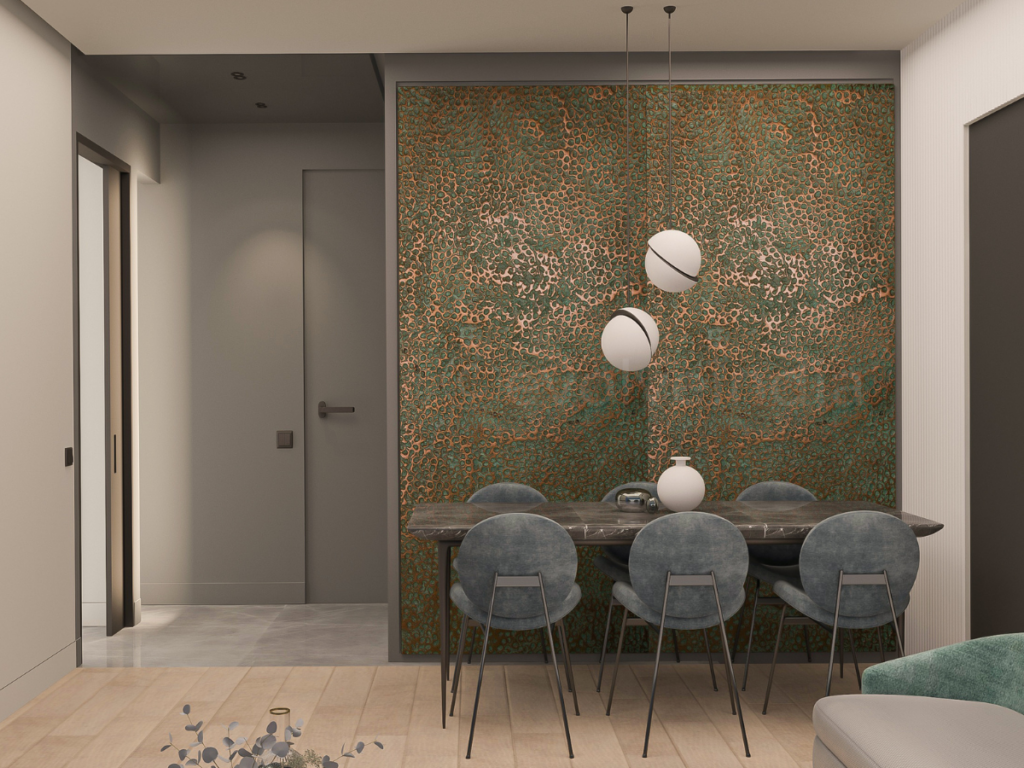
Pros:
- Wall panels come pre-cut and ready to install, so you can easily install them on your walls.
- They are durable and resistant to wear and tear.
- They are easy to clean and require minimum maintenance.
- Wall panels are fire-resistant and also eco-friendly.
Cons:
- Wall panels are susceptible to chipping and peeling if exposed to excess moisture. Not an ideal choice for humid areas.
- They have limited choices of colours compared to other wallcovering materials.
Price range:
If you’re looking for laminate panelling, the price starts at INR 350 per square foot, while the price for veneer finish starts at INR 500 per square foot. For upholstered wall panels, the price starts at INR 300 per square foot.
Tips for Choosing the Perfect Wall Covering
Given the number of options available, choosing the perfect wall covering may be more challenging than it seems. Here are some tips to help you make that choice.
1. Understand the Purpose and Define Your Aesthetic
What’s the purpose of your space? Is it a residence, a luxury hotel, or a high-end office? Understand the need and the desired aesthetics and consider the style you want to achieve. Also, consider the thermal and acoustic benefits each wall covering material offers.
2. Consider Maintenance
Choose wallcovering materials that are durable and easy to maintain. Go for options that are jointless and have a decent lifespan.
3. Pay Attention to Lighting
Evaluate the natural lighting conditions in your space and choose wallcoverings that complement your space.
4. Prioritise Quality and Consider the Environment
Go for high-quality materials that not only add depth and aesthetics to your walls but ensure that you do not harm the environment. Given the growing need for using eco-friendly materials, make an effort to choose sustainable materials.
Offering limitless aesthetic and functional possibilities, these mesmerising wall coverings are bound to leave you and your guests in awe. So, go ahead and pick the one that perfectly aligns with your needs and manifest the home that you’ve always wanted.
Note: We at Evolve manufacture exquisite surfaces in the form of wall panels and door skins which can be supplied to projects globally. We are based out of Mumbai, India, and have catered to projects nationally as well as internationally including Dubai, Kuwait, Bahrain, Riyadh, Italy, Kuala Lumpur, and Malaysia. Our specialty is working with new-age building materials like liquid metal, decorative textured concrete, and paintable corten steel.
We work with architects, interior designers, fit-out contractors, furniture manufacturers, and new homeowners. And are always on the lookout to collaborate with potential stockists and retailers worldwide.
If you are looking to source unique surfaces for your interior design projects fill out the form below to receive our e-catalog.





